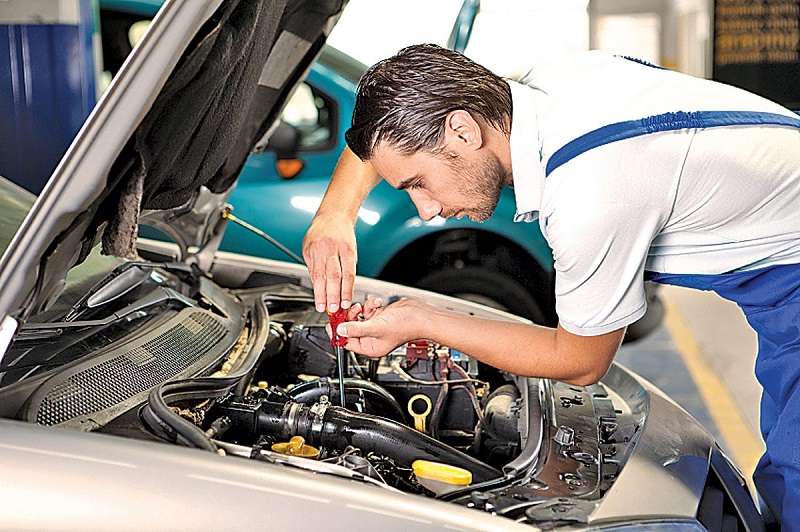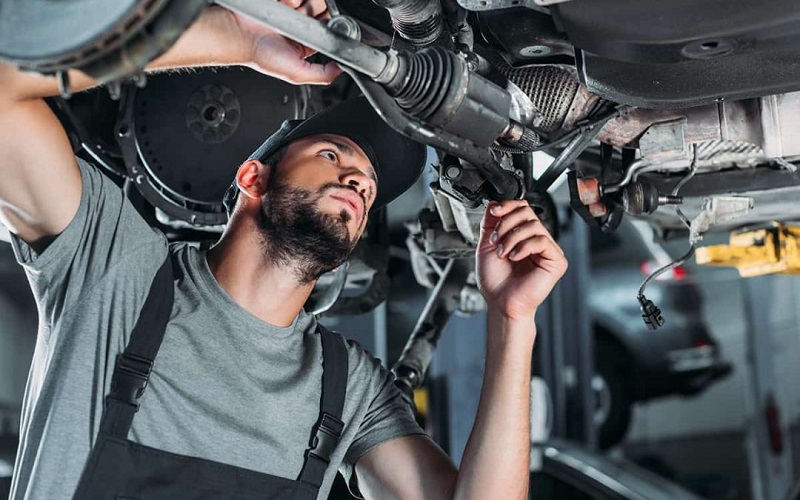So, you’ve decided to channel your inner mechanic and tackle that car repair project. Whether you’re fixing a flat tire, changing the oil, or diving into more complex issues, safety should be your co-pilot on this garage adventure. Buckle up as we explore the essential safety precautions to keep you, your car, and your sanity intact.
1. Safety Gear: Your Garage Armor
Imagine a knight heading into battle without armor – not a pretty picture, right? The same goes for your foray into car repairs. Before grabbing that wrench, don your safety gear:
- Protective Eyewear: Shield those peepers from flying debris, sparks, or any unexpected surprises.
- Gloves: Keep your hands safe from cuts, bruises, and those stubborn bolts that refuse to budge.
- Closed-Toe Shoes: No sandals in the garage! Closed-toe shoes provide the extra protection you need.
2. The Jack and the Stands: Lifting Safely
It’s time to lift your car, but safety doesn’t take a back seat. Use a hydraulic jack to raise the car, and then slide sturdy jack stands beneath for support. Picture this: the jack is your co-star, and the jack stands are the reliable supporting cast – working together for a safe lift.
Pro Tip: Always check the weight capacity of your jack and stands to ensure they can handle your vehicle’s heft.
3. Mind the Fluids: From Oil Changes to Coolant Checks
Working with fluids can be like navigating a slippery slope. Here’s your roadmap:
- Engine Off: Before any fluid-related escapade, turn off the engine and let it cool. Hot surfaces and fluids don’t make good dance partners.
- Drain Pans: Place a drain pan beneath the area you’re working on. It’s like having a loyal sidekick catching every drop.
- Proper Disposal: Dispose of used fluids responsibly. Oil, coolant, and other liquids need to find a proper resting place, not your driveway.
4. Electrifying Caution: Battery Safety
The car battery – the heartbeat of your vehicle. Handle it with care:
- Safety Gloves: Acid on your skin? No thanks! Wear safety gloves when dealing with the battery.
- Disconnect: Before performing any electrical surgery, disconnect the battery. It’s like giving your car a little nap during surgery.
- No Smoking Zone: Batteries and sparks don’t mix. Make your garage a smoke-free zone during battery procedures.
5. Know Your Limits: When to Call for Reinforcements
You’re a DIY hero, but even heroes know when to call for backup. If a repair is beyond your comfort zone or requires specialized tools, don’t hesitate to seek professional help. It’s like knowing when to pass the baton in a relay race – teamwork makes the dream work.
FAQs: Clearing the Garage Fog
Q: Can I use my car jack without jack stands?
A: It’s not recommended. Always use jack stands in conjunction with your jack for added safety.
Q: How often should I change my car’s oil?
A: Follow your car manufacturer’s recommendations, but a common rule is every 3,000 to 5,000 miles for conventional oil.
Q: Is it safe to jumpstart my car in the rain?
A: It’s better to wait for dry conditions. Water and electricity don’t mix well.
Q: Can I dispose of used oil in the trash?
A: Never! Recycle used oil at designated collection centers to prevent environmental harm.
Q: What tools should I have for basic car repairs?
A: A basic toolkit should include screwdrivers, pliers, a wrench set, a jack, jack stands, and a tire iron.
In the Garage Symphony: Safety Takes the Lead
Repairing your car is a bit like conducting an orchestra. Safety is the maestro, directing each move to create a harmonious repair experience. So, gear up, lift wisely, and let the garage symphony begin. May your repairs be smooth, your tools be trustworthy, and your safety always ride shotgun!






